A puzzler from Willis Ernest Johnson, Mathematical Geography, 1907:
“A man was forty rods due east of a bear, his gun would carry only thirty rods, yet with no change of position he shot and killed the bear. Where on earth were they?”
A puzzler from Willis Ernest Johnson, Mathematical Geography, 1907:
“A man was forty rods due east of a bear, his gun would carry only thirty rods, yet with no change of position he shot and killed the bear. Where on earth were they?”
Like Nabokov, Lord Dunsany was fond of composing chess problems. This example was published in Hubert Phillips’ Week-end Problems Book of 1932:
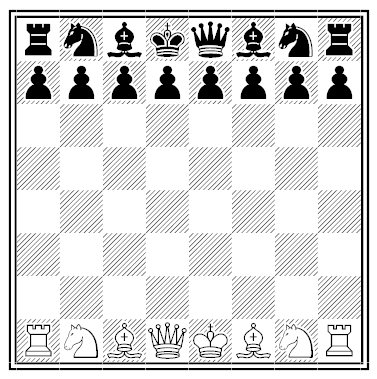
Two eccentric gentlemen abandoned this position at a chess club — White had announced mate in four. What was the mate?
The key is to notice that Black’s king and queen have changed positions. This is not possible if the black pawns are on their home squares. And this means that we’ve been viewing the position upside down:
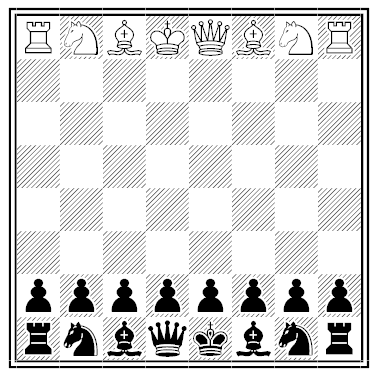
Now it’s clear that Black is hemmed in by his own pawns — White can mate him in four moves with the b8 knight, e.g. by 1. Nc6 Nf3 2. Nb4 (threatening Nd3#) Ne5 3. Qxe5 (any) 4. Nd3#.
Dunsany drew a game against Capablanca in a simultaneous exhibition in London in April 1929. He later wrote:
One art they say is of no use;
The mellow evenings spent at chess,
The thrill, the triumph, and the truce
To every care, are valueless.
And yet, if all whose hopes were set
On harming man played chess instead,
We should have cities standing yet
Which now are dust upon the dead.
In a certain kingdom, boys and girls are born in strictly equal proportions. Determined to increase the proportion of women in the land, the sultan issues a decree: Any woman who bears a son is forbidden to have any further children. He reasons that some families will thus contain multiple daughters but a single son.
A number of years pass, and the sultan is confused to find that the kingdom still contains an equal number of boys and girls. Why?
A puzzle from R.M. Abraham, Diversions & Pastimes, 1933:
Michael O’Bleary hired a motor-car at a cost of fifteen dollars to take him to Ballygoogly market and back again in the evening. When he got half-way on his outward journey he met a friend, gave him a lift to the market, and brought him back to the point where he picked him up in the morning. There was a dispute about the payment. How much should Michael charge his passenger for his share of the motor hire?
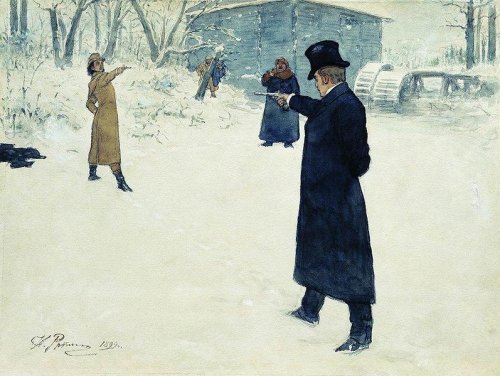
You must participate in a three-way duel with two rivals. Each of you is given a pistol and unlimited ammunition. Unfortunately, you, Red, are the weakest shot — you hit your target only 1/3 of the time. Black is successful 2/3 of the time, and Gray hits everything he aims at.
It’s agreed that you will take turns: You’ll shoot first, then Black, then Gray, and you’ll continue in this order until one survivor remains. At whom should you shoot?
What is the sum of all the figures in the numbers from 1 to 1 million?
Hint: With the right technique, this can be done in the head.
In 1938, Samuel Isaac Krieger of Chicago claimed he had disproved Fermat’s last theorem. He said he’d found a positive integer greater than 2 for which 1324n + 731n = 1961n was true — but he refused to disclose it.
A New York Times reporter quickly showed that Krieger must be mistaken. How?
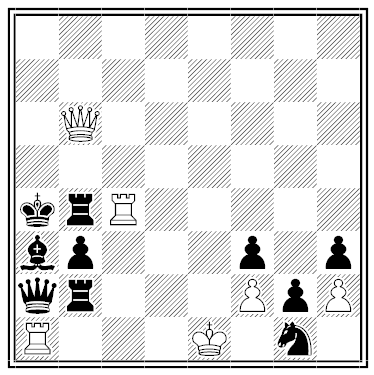
By Sam Loyd. In how few moves can White force Black to mate him?
The answer is to castle queenside:
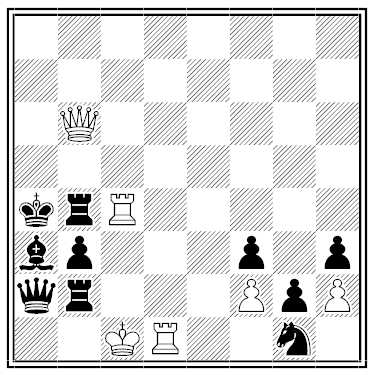
Now every Black move is mate.
Each point in an infinite plane is colored either red or blue. Prove that there are two points of the same color that are exactly 1 meter apart.